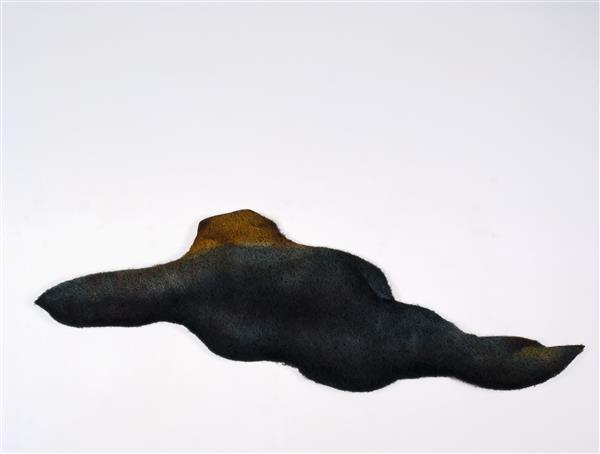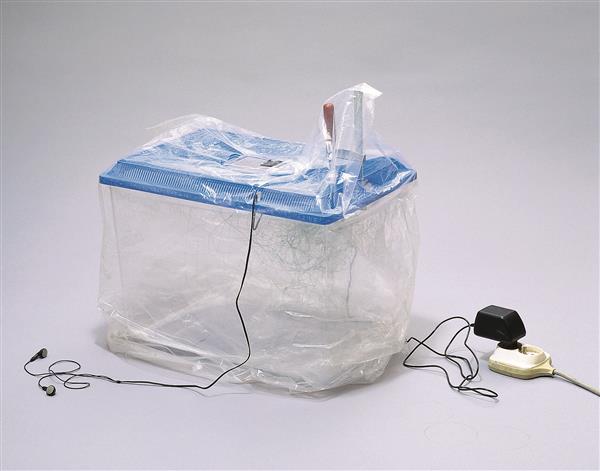Mermaid
Richard Artschwager
acrylic paint on rubberized hair on Masonite
66 × 243.8 × 6.4 cm
1998
Acquisition 2006
Inv. No. 0155
Since the 1960s, Richard Artschwager’s works have transcended the delimitations of art-historical categorizations, linked Minimal Art, Pop Art, and Conceptual Art, and presented themselves as pieces of furniture, paintings, and sculptures all in one. The series of figurative wall pieces made from rubberized hair oscillates between painting and object, imagination and reality. The mermaid’s aloofness springs from its flowing form. Though it seems virtually impossible to grasp it, it is firmly rooted in the viewer’s imagination as an archetype.
An interview with Hans Ulrich Obrist in 2010 conveys an idea of Richard Artschwager’s working method:
HUO: What was your first museum visit as a child?
RA:
HUO: Do the fields of science and mathematics, which you studied early on in your life, feed into your practice at all?
RA: Executing a work, yes; getting an idea, no.
HUO: You came to work as an artist a little later on in your career, having spent time as a cabinetmaker and furniture manufacturer. What drew you to art? Was there an epiphany that marks the beginning of your trajectory as an artist?
RA: The furniture – a trade to support the art as well as myself.
HUO: I read a quote in which you said, “Sculpture is for the touch, painting is for the eye. I wanted to make a sculpture for the eye and a painting for the touch.”
RA: Shopping for progress – originality.
HUO: In many of your paintings, the status of the painting as both object and purveyor of image is very striking. Could you talk a little about the relationship that exists between object and image?
RA: Image palpable as the object depicted.
HUO: Are chance and being open to accidents important to the way in which you work?
RA: Yes.
HUO: How important is drawing to you? Is it a daily practice?
RA: Pretty much.
HUO: How important is writing to your practice? Are they connected or separate forms of work?
RA: Separate.
HUO: When does a thing exist?
RA: When you can see, smell, hear it.
HUO: What is the most recent work you have created?
RA: A landscape.
HUO: What would you advise young artists to do?
RA: Don’t throw anything away.
Continue readingPublications
evn collection. 2006–2011, Cologne 2011, p. 126–129

